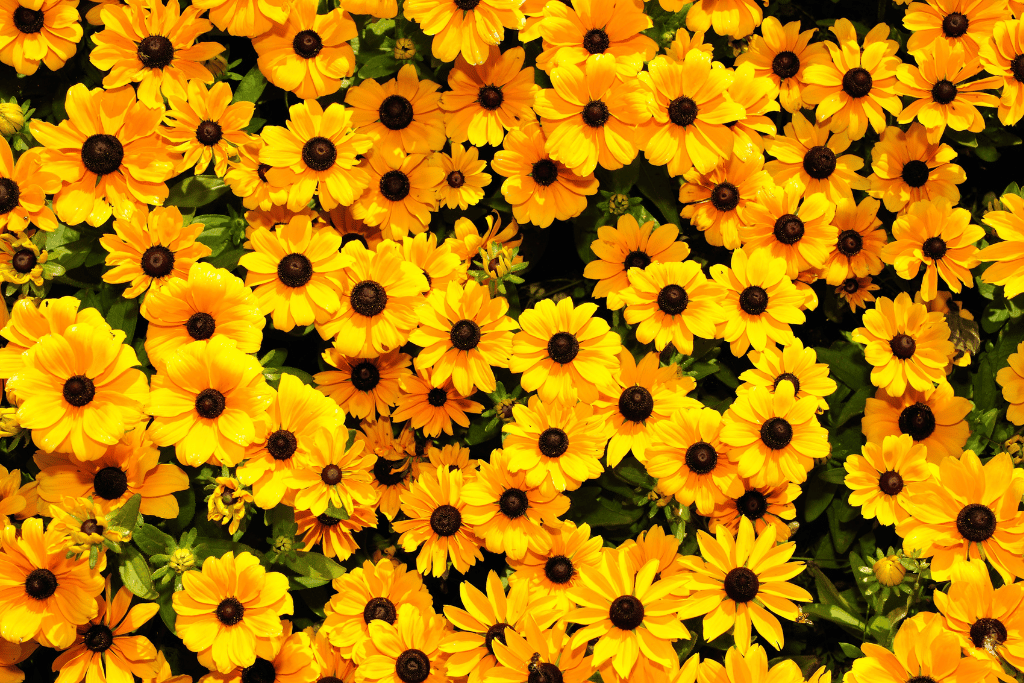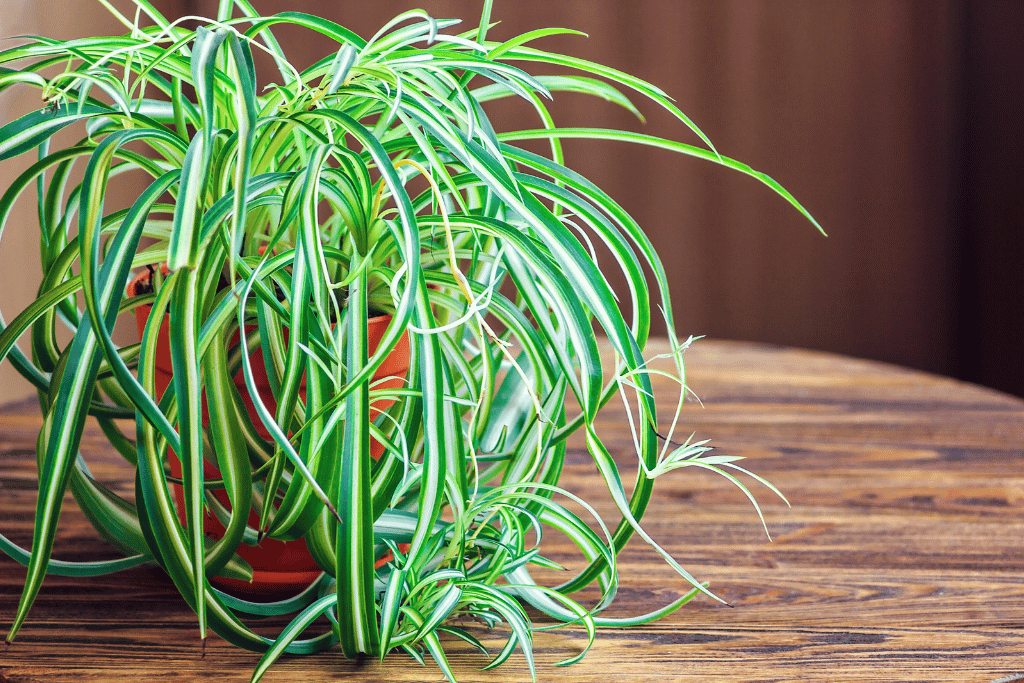
Are you feeling tired of lackluster blooms in your garden? Look no further than the Black Eyed Susan! These vibrant yellow and orange flowers are a staple in gardens across the country, and for a good reason. Not only do they look gorgeous, but they’re also incredibly easy to grow from seed. Trust me, even someone whos never grown a plant in their life will be able to successfully grow these beauties.
I learned the hard way after my first attempt at planting Black Eyed Susan seeds ended in failure. I was so excited to see those little sprouts popping up out of the soil, but they quickly wilted and died. It was a real bummer, to say the least. But after some research and trial and error, I discovered the secrets to successfully growing these vibrant blooms.
So if you’re ready to add a splash of color to your garden and show off your green thumb skills, let’s dive into the world of planting Black Eyed Susan seeds.
Trust me; it’s easier than you think and way more rewarding than spending all your money on pre-grown plants at the nursery.
Choosing the Right Location

Alright, let’s talk about finding the perfect spot to plant your Black Eyed Susan seeds.
Light
These blooms love the sun, so it’s important to choose a location that gets plenty of it throughout the day. You should aim to give them around 6-8 hours of full, direct sunlight per day.
They can tolerate some shade, but you will notice they will start to stretch and search for light.
I made the mistake of planting mine in a spot that was shaded for a few hours in the morning, and let me tell you; those plants were not happy. So find a sunny spot in your garden, and your Black Eyed Susans will thank you for it.
Soil
Black Eyed Susans prefer soil that is well-draining and nutrient-rich. If your soil is heavy and tends to retain water, you may want to consider amending it with some sand or perlite to improve drainage.
If your soil is lacking nutrients, you can add some compost or fertilizer to give your plants the boost they need.
Spacing
Black Eyed Susans can grow up to three feet tall and two feet wide, so it’s important to give them enough room to spread out.
If you’re planting multiple seeds, make sure to space them at least at least a foot apart to allow for proper growth. Trust me; you don’t want to end up with a tangled mess of plants fighting for space.
With these tips, you’ll be able to choose the perfect location for your Black Eyed Susan seeds to thrive. Just remember, these plants are pretty low-maintenance, but they still need love and attention to grow their best.
Planting Black Eyed Susan Seeds

Now that you’ve found the perfect spot to plant your Black Eyed Susan seeds, it’s time to get them in the ground.
The Best Timing
Black Eyed Susan seeds should be planted outdoors after the threat of frost has passed, and the soil has warmed up a bit. Here in my neck of the woods, that means waiting until mid-to-late May. But if you’re not sure when the best time is for your area, a quick internet search should do the trick.
Planting Depth
Making sure you plant your Black Eyed Susan seeds at the right depth is crucial. The seeds are pretty small, so you don’t want to bury them too deeply. Aim for a planting depth of about a quarter inch to a half inch. Be sure to space them out according to the instructions on the seed packet.
How to Plant Black Eyed Susan Seeds Step-By-Step

Now for the fun part: planting those precious Black Eyed Susan seeds. Here’s a simple step-by-step guide to making sure you get it just right:
- Dig a small hole for each seed, about a quarter inch to half an inch deep.
- Drop a seed into each hole, being careful not to overcrowd them.
- Cover the seeds with soil and gently tamp it down to make sure they’re snug in their new home.
- Water the seeds gently to settle them in and give them a little hydration boost.
Thats it! Easy peasy, right? Just remember to be patient and give your seeds time to germinate. It can take anywhere from seven to fourteen days for those little sprouts to pop up, so don’t get discouraged if you don’t see anything right away.
And with that, you’re well on your way to growing your very own Black Eyed Susan plants. Happy Planting!
Caring for Black Eyed Susan Plants

Well done- Your Black Eyed Susan seeds have sprouted and are on their way to becoming beautiful, thriving plants!
Now let’s talk about how to take care of them to ensure they reach their full potential.
Watering
When your seeds are first planted, it’s vital to keep the soil consistently moist until they’ve established themselves. After that, Black Eyed Susans are pretty drought tolerant and don’t need to be watered as frequently.
However, during periods of prolonged drought, it’s a good idea to give them a deep watering to keep them hydrated.
Soil Amendments
Black Eyed Susans prefer well-drained soil and full of nutrients. If your soil is lacking nutrients, you can give your plants a boost with some compost or fertilizer. Just be sure to follow the instructions on the package and don’t over-fertilize, as this can actually harm your plants.
Pruning and Deadheading
Black Eyed Susans are pretty low maintenance when it comes to pruning, but removing spent blooms can help encourage new growth and prolong the blooming period. Simply snip off the spent blooms as close to the stem as possible.
If your plants start to get a little leggy or out of control, don’t be afraid to give them a light trim to encourage bushier growth.
And there you have it! With a little bit of love and attention, your Black Eyed Susans will be the stars of your garden in no time. So get out there, water them well, give them a little fertilizer, and maybe even serenade them with a song or two (hey, you never know, they might appreciate it!).
Troubleshooting and Common Issues

Don’t panic if you run into some issues with your Black Eyed Susan plants. We can get them back on track with a little bit of troubleshooting.
Pest and Disease Prevention
Let’s start with pest and disease prevention. Black Eyed Susans are generally pretty hardy plants, but they can still fall victim to pests like aphids, spider mites, and slugs, and diseases like powdery mildew and rust.
To prevent these issues, make sure your plants are getting enough sunlight and air circulation, avoid overwatering, and keep an eye out for any signs of infestation or disease. If you notice any issues, you can try plenty of natural pest control and disease prevention methods, like companion planting and neem oil.
Common Growth Issues
If your Black-Eyed Susans aren’t growing as well as you’d like them to, there are a few things you can try. If they’re getting too tall and leggy, try giving them light pruning to encourage bushier growth.
If they’re not blooming as much as you’d like, make sure they’re getting enough sunlight and try fertilizing with a low-nitrogen, high-phosphorus fertilizer.
If you find that your plants aren’t surviving in the winter, try adding a layer of mulch around the base of the plant to protect the roots from freezing temperatures.
Harvesting and Saving Seeds

Congratulations, Your Black Eyed Susans have successfully bloomed and provided you with beautiful flowers all season long. Now it’s time to think about harvesting and saving seeds for future use.
First things first: when should you harvest your seeds? Harvesting Black Eyed Susan seeds typically produce seeds in the late summer or early fall, when the flowers have started to dry up and turn brown. Wait until the seed heads have turned completely brown and the seeds are hard and dry to the touch before harvesting.
Once you’ve harvested your seeds, there are a few different methods you can use for storing them. One option is to simply spread the seeds out on a tray and let them dry completely for a few days. Once they’re dry, store them in an airtight container in a cool, dry place until you’re ready to use them.
Another option is to ferment the seeds to remove any unwanted materials and increase germination rates. To do this, place the seeds in a bowl of water and let them sit for a few days, stirring occasionally.
The good seeds will sink to the bottom, while any unwanted materials will float to the top. Skim off the debris, rinse the seeds thoroughly, and then dry them before storing.
And there you are- with a little bit of effort, you can harvest and save your own Black Eyed Susan seeds to use in your garden next year. Just be sure to label your seeds with the variety and the date harvested so you don’t forget what they are! Happy harvesting!
Concluding Thought on Planting and Nutruiing Black Eyed Susan Seeds
To sum things up, planting Black Eyed Susan seeds is super easy! Some of the key factors to consider are choosing the right location, preparing the soil, planting them with the perfect spacing, and providing them with the care they need to germinate and thrive.
Compared to other flowering plants, the Black Eyed Susans are easy to maintain, with light pruning. Like many plants, you just need to find their sweet spot. Black-Eyed Susans give you the opportunity to enjoy their blooms year after year by saving their seeds.
Seed saving is not only a sustainable gardening practice, but it also ensures you are planting the most robust seeds in your garden.
Ready to Dig in and Get Your Hands Dirty?
Join our plant care community and grow your gardening skills. Look no further than our plant care pages. Our website is the perfect place to learn about and share your passion for all things gardening. With our expert tips and easy-to-follow planting tips, you’ll grow like a pro in no time. So don’t wait. Join us today and start digging in!
Frequently Asked Questions (FAQ)
Will Black-Eyed Susans come back every year?
Some varieties of Black Eyed Susans come back every year. It depends on the variety you are growing. If you select the hardy perennial cultivars like Rudbeckia fulgida or the taller Rudbeckia laciniata, then you will see these come back every year.
Can I just scatter black-eyed Susan seeds?
Some people scatter the Black Eyed Susan seeds; however, if you take a little care with spacing when planting, you will ensure even growth. If you scatter the seeds, you could end up with uneven mounds of flowers and foliage.
How do you prepare black-eyed Susans for winter?
The only maintenance that’s needed to prepare your Black Eyed Susans for winter is to cut back the old, dead, or dying top growth and cut the stems to the ground. If you experience extremely cold winters or snow, you can mulch over the top of the base of the plant to protect it from the frost.
Should I soak black-eyed Susan seeds before planting?
Like with most seeds, pre-soaking the Black-Eyed Susan seeds in warm water overnight before planting will speed up the germination process.



